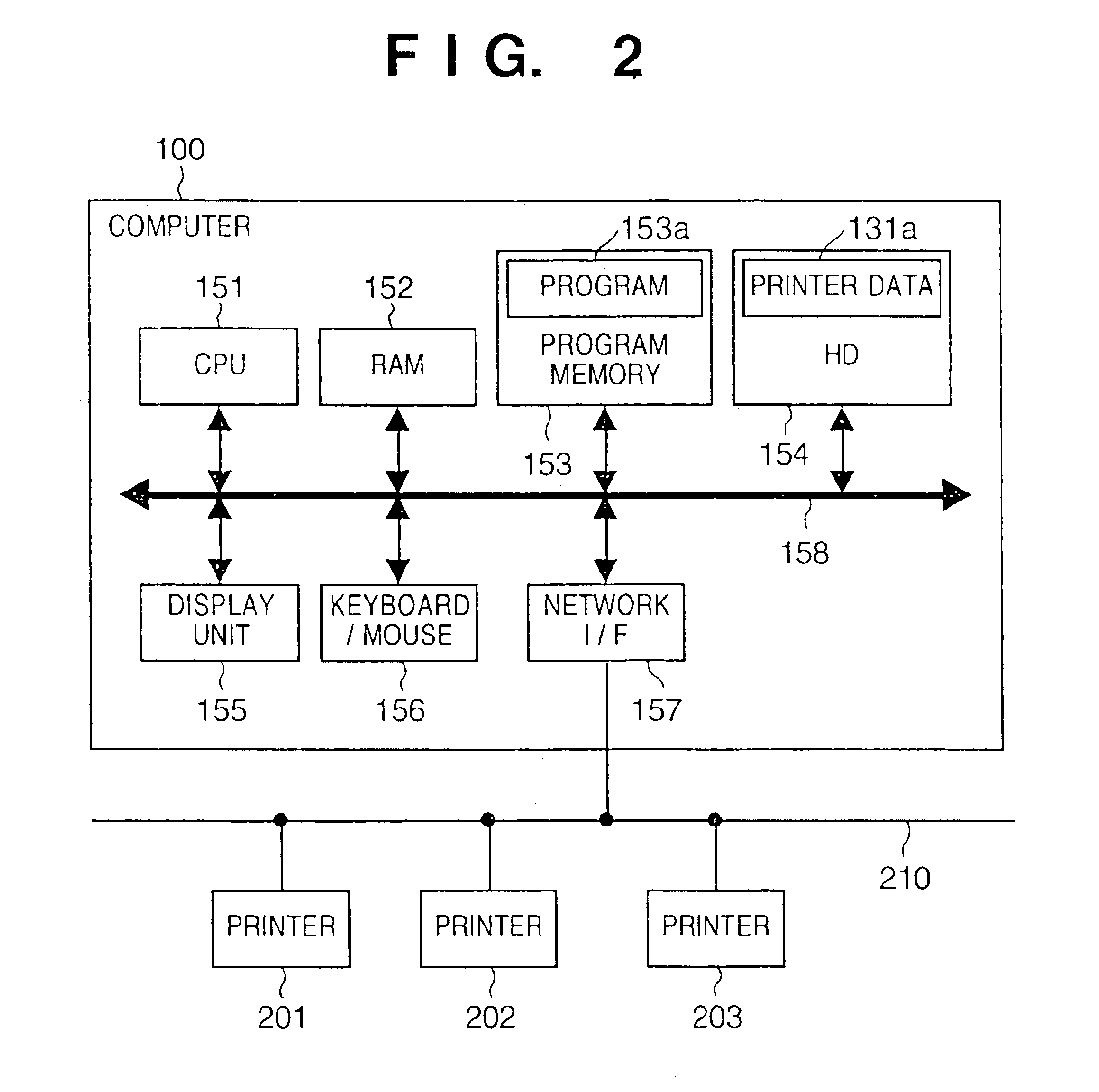Designating an image processing apparatus based on limited selection conditions
a technology of image processing and selection conditions, applied in the direction of digital output to print units, instruments, electrographic processes, etc., can solve the problems of cumbersome operation, unsuitable, system requires inefficient operation in a case, etc., and achieve the effect of reducing cumbersome operation by an operator
- Summary
- Abstract
- Description
- Claims
- Application Information
AI Technical Summary
Benefits of technology
Problems solved by technology
Method used
Image
Examples
operation example 1
[0060]Operation Example 1 relates to the processing in step S140 (FIG. 3), performed in a case where the selection condition data obtained in step S120 designates to select a printer which completes execution of the print job in the shortest time period.
[0061]FIG. 4 is a flowchart showing a part of specific processing contents performed in step S140.
[0062]In step S200, it is determined whether or not the selection condition data, inputted by the operator in step S120, designates a printer which completes the print job execution in the shortest time period. If the result of determination is YES, the processing proceeds to step S210, while if the result is NO, the processing proceeds to step S250.
[0063]In step S210, job control data, indicative of progress of the print job assigned to each printer, is obtained. Note that the job control data is controlled by, for instance, another program (e.g., which constitutes a part of the program 153a) provided for controlling print jobs.
[0064]In...
operation example 2
[0076]Operation Example 2 relates to print processing performed in a case where the selection condition data obtained in step S120 (FIG. 3) designates to select a printer capable of color printing.
[0077]According to the operation example 2, a printer capable of color printing is selected based on the printer data in step S140 in FIG. 3, then a message identifying the selected printer is displayed on the display unit 155 in step S150, and the print job is assigned to the selected printer in step S160.
[0078]The processing in step S140 in this case is explained by adapting the flowchart shown in FIG. 4. In step S200, determination is made that the selection condition data does not designate the “printer which completes the print job execution in the shortest time period.” Therefore, the processing proceeds to step S250 where a printer satisfying the designated selection condition (printer capable of color printing) is selected.
operation example 3
[0079]Operation Example 3 relates to print processing performed in a case where the selection condition data obtained in step S120 (FIG. 3) designates to select a printer capable of both-sides printing.
[0080]According to the operation example 3, a printer capable of both-sides printing is selected based on the printer data in step S140 in FIG. 3, then a message identifying the selected printer is displayed on the display unit 155 in step S150, and the print job is assigned to the selected printer in step S160.
[0081]The processing in step S140 in this case is explained by adapting the flowchart shown in FIG. 4. In step S200, determination is made that the selection condition data does not designate the “printer which completes the print job execution in the shortest time period.” Therefore, the processing proceeds to step S250 where a printer satisfying the designated selection condition (printer capable of both-sides printing) is selected.
PUM
 Login to View More
Login to View More Abstract
Description
Claims
Application Information
 Login to View More
Login to View More - R&D
- Intellectual Property
- Life Sciences
- Materials
- Tech Scout
- Unparalleled Data Quality
- Higher Quality Content
- 60% Fewer Hallucinations
Browse by: Latest US Patents, China's latest patents, Technical Efficacy Thesaurus, Application Domain, Technology Topic, Popular Technical Reports.
© 2025 PatSnap. All rights reserved.Legal|Privacy policy|Modern Slavery Act Transparency Statement|Sitemap|About US| Contact US: help@patsnap.com



